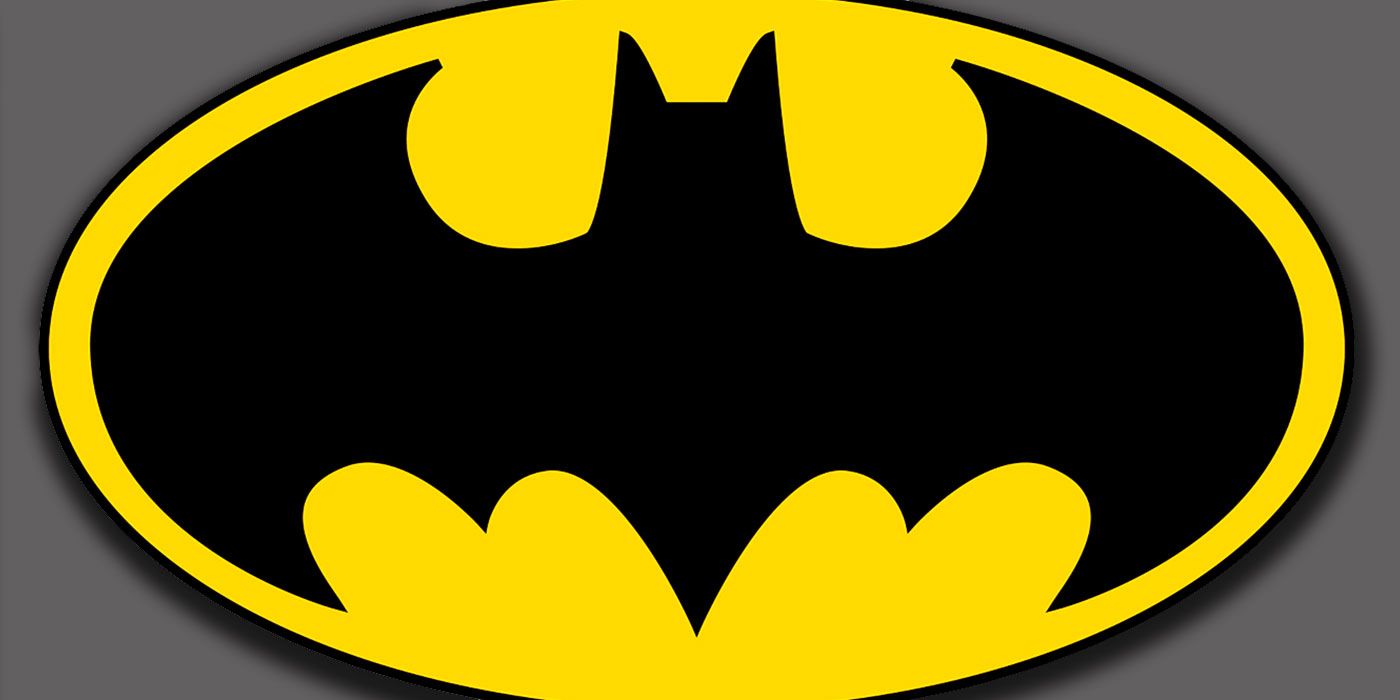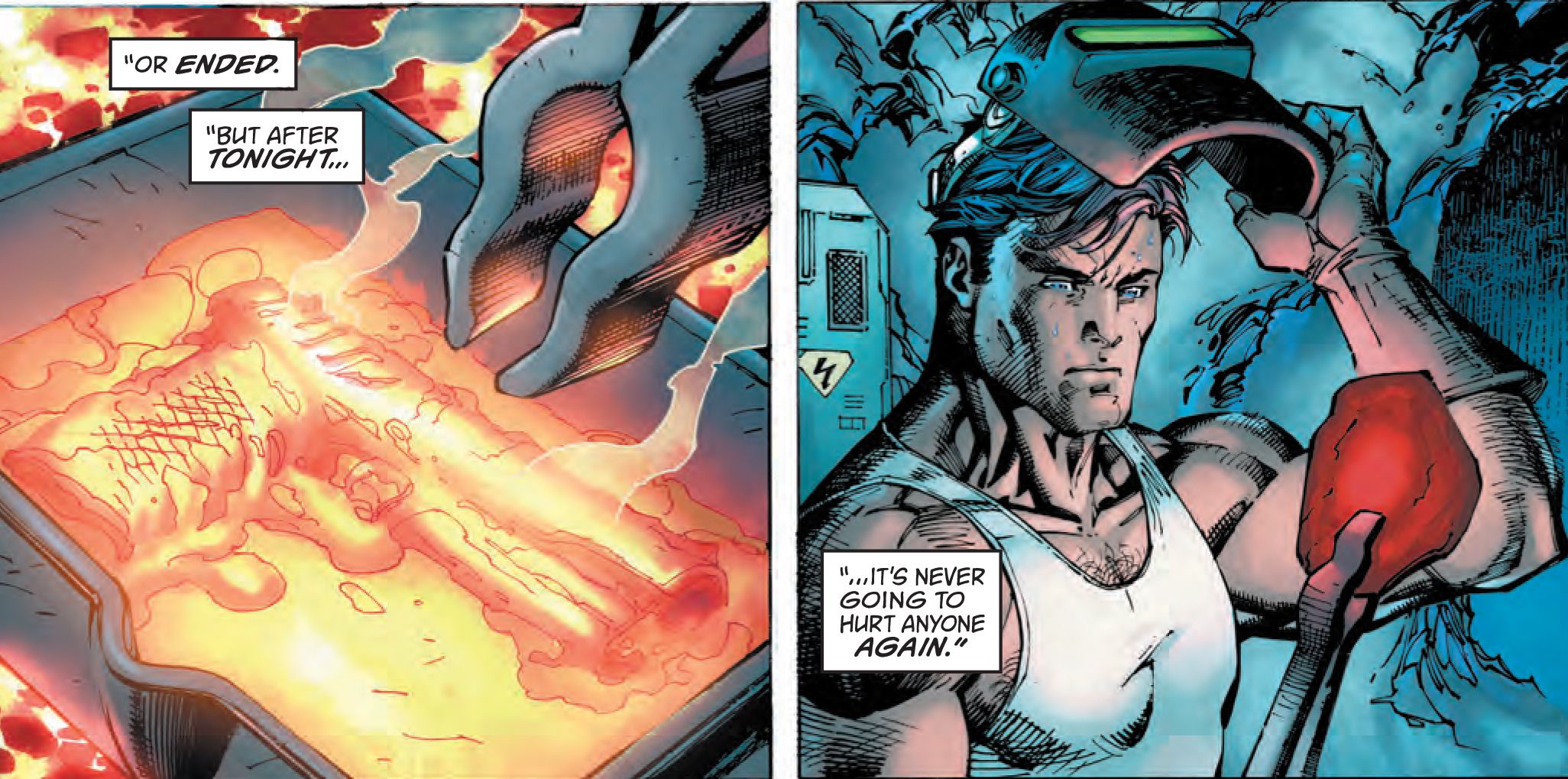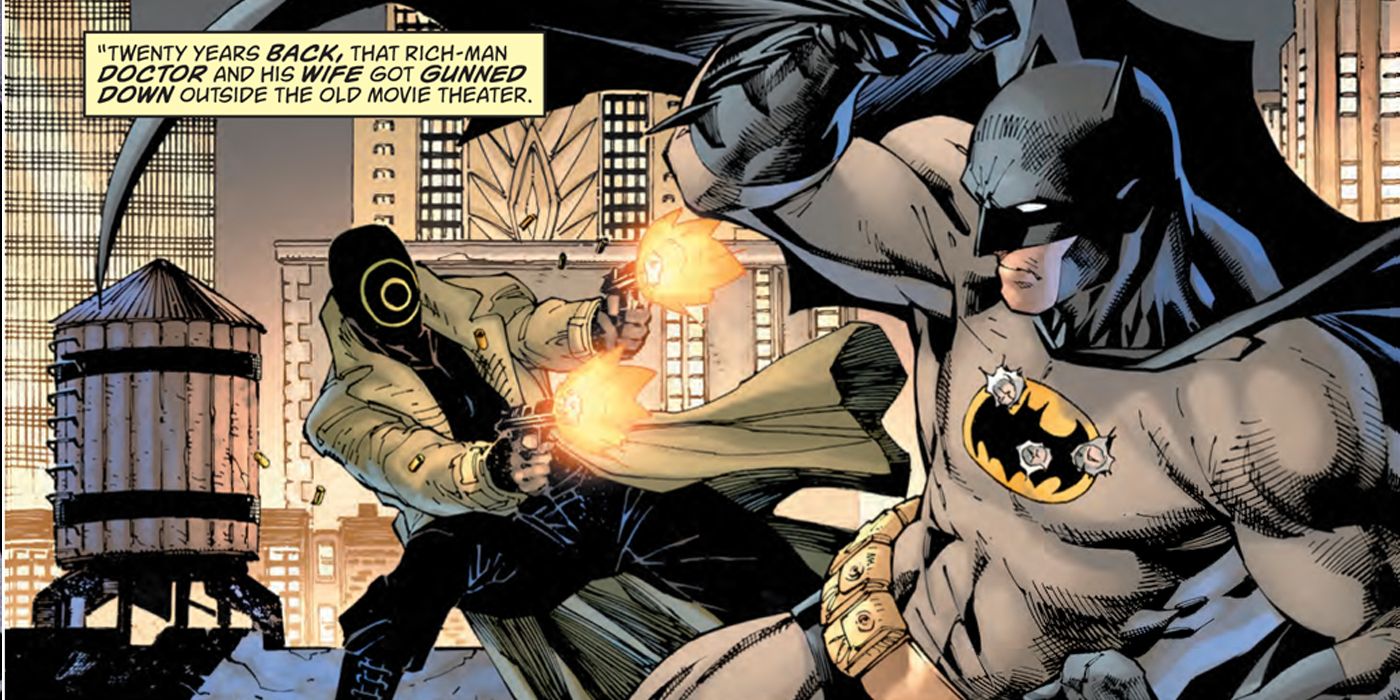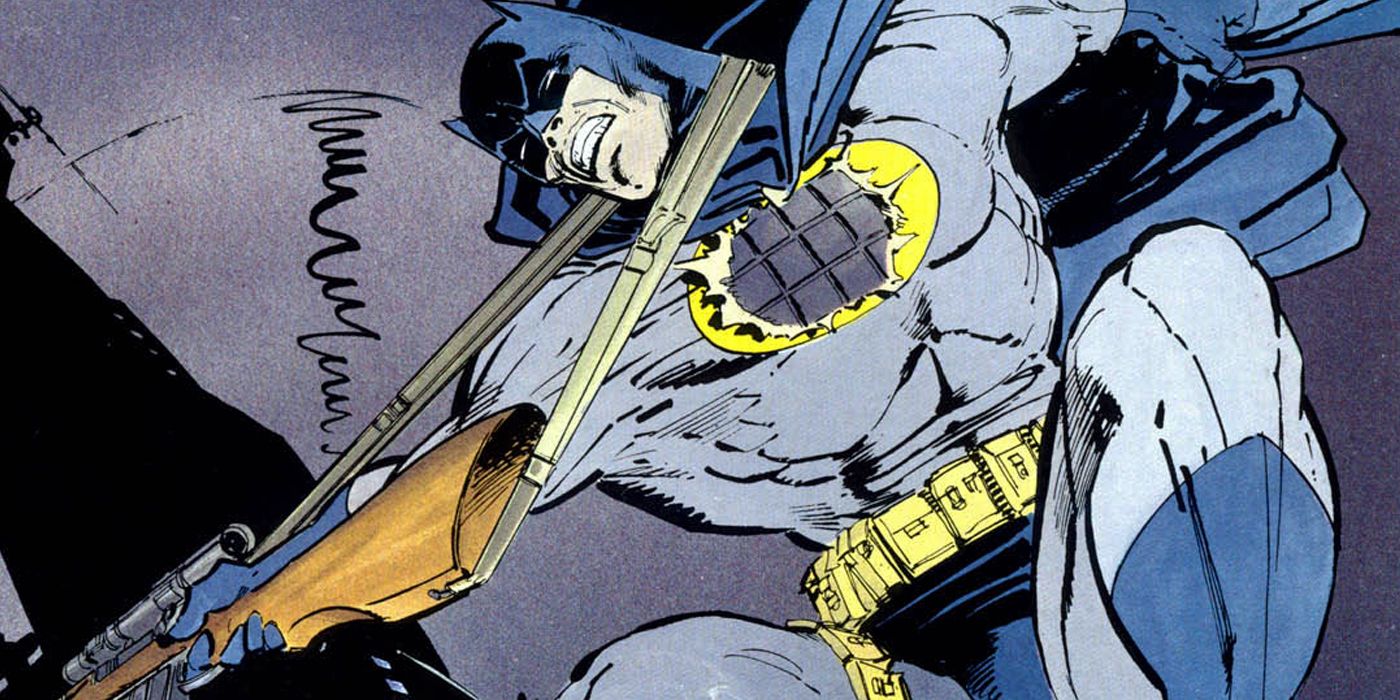WARNING: This article contains spoilers for the Detective Comics #1000 story "Manufacture for Use," by Kevin Smith, Jim Lee, Scott Williams, Alex Sinclair and Todd Klein, on sale now.
Batman's Bat-Symbol is one of the most recognizable images in two worlds. After being proudly displayed across countless comics, movies, TV shows toy lines, video games and t-shirts in the last several decades, the Bat-Symbol transcends generations and language barriers. Second only to Superman's S-shield, the Bat-Symbol is a definitive icon of superhero fiction, whether or not it includes the logo's classic yellow oval.
To the residents of the DC Universe, the Bat-Symbol usually means that there's trouble in Gotham City, especially when Gotham's police department shines the Bat-Signal high above the city's skyline. It's a beacon of light that serves as both a public's cry for help and as the calling card of Gotham's Dark Knight.
Like every other part of Batman's costume, the Bat-Symbol has gone through numerous changes that tweaked its design or function over the past 80 years. And in the landmark Detective Comics #1000, Kevin Smith and Jim Lee reveal that Bat-Symbol on Batman's costume covers a metal shield that's made from the melted remnants of the gun that killed Bruce Wayne's parents.
RELATED: DC Releases 33 Detective Comics #1000 Variant Covers
In the story, Batman, in his frequent disguise as low-level criminal Matches Malone, buys the gun from a pawn shop that specializes in weapons related to famous Gotham crimes. While most of the items in the shop are leftovers from famous villains, Batman buys the handgun for $1500 and takes it back to the Batcave.
When Alfred says that the gun makes especially grim addition to Batman's collection of memorabilia, the hero responds by saying that he's going to forge the weapon into something useful. As he places the gunmetal shield behind the symbol in his costume, Batman declares that the weapon that once broke his heart will now protect it.
RELATED: DC Reveals Batman's Bizarre (Even by His Standards) Birthday Ritual
As those events unfold, those relatively quiet conversations are juxtaposed with scenes of Batman taking on various members of his rogues gallery. From major foes like the Joker and the Penguin, to minor threats like Firefly or the Smith-co-created Onomatopoeia, the story highlights how they've all focused their attacks on the yellow Bat-Symbol on Batman's chest. While those bullets, knives and other assorted attacks would've killed most people, the reinforced protected area around the Bat-Symbol has saved Batman's life, again and again.
While Batman's costume had a more simple, stylized Bat-Symbol in his earliest adventures and in more recent years, the Bat-Symbol's yellow oval was a distinct part of Batman's costume for decades.
As Batman scholar Michael Uslan notes that the yellow oval was originally introduced to give Batman a logo that could be trademarked at the suggestion of DC lawyers. After its debut as part of editor Julius Schwartz's "New Look" revamp in 1964, the yellow oval Bat-Symbol served as a hallmark of Batman's costumes for the rest of the 20th century and beyond.
In 1986, Frank Miller introduced the idea of the Bat-Symbol as a protective shield in his seminal miniseries The Dark Knight Returns. In that story, Miller revealed that the bright symbol was meant to draw fire to a heavily-protected area on his chest and away from Batman's more vulnerable extremities. Although that tale took place in a dystopian possible future, the Bat-Symbol has served a similar function in numerous incarnations of the Caped Crusader since that idea was introduced.
While this Detective Comics #1000 story marks the first time the Waynes' murder weapon has been turned into the shield behind the Bat-Symbol, it's not the first time that Batman has obtained the gun that changed his life.
As part of Mike W. Barr and Todd McFarlane's 1987 storyline "Batman: Year Two," Batman uses the Wayne murder weapon to hold Joe Chill, the man who murdered the Waynes, at gunpoint. After another villain kills Chill before Batman can decide his fate, he buries the weapon at the base of a Wayne Foundation building in Detective Comics #578.
During an even more somber hallucinatory sequence in Grant Morrison and Tony Daniel's Batman #673, Batman gives Chill the Wayne murder gun, which the criminal then uses to kill himself. However, it's not clear if this moment ever actually happened in any version of the DC Universe or was simply a dark vision.
RELATED: Zack Snyder Has Strong Words for Anyone Who Doesn't Like Batman Killing
In the cinematic world of the DC Extended Universe, Ben Affleck's Batman seemingly keeps the weapon as a morbid trophy in the Batcave that can briefly be seen in the background in director Zack Snyder's Justice League.
While those stories all position the gun as a bleak symbol of cyclical death and violence, Detective Comics #1000 forges it into part of something better. In Smith and Lee's story, the gun becomes a shield that literally holds up the impossible totemic weight of the Bat-Symbol on Batman's chest. By making the gun that killed his parents an essential part of his costume, Batman conquers the thing that scarred him for life and turns into another tool in his endless crusade against crime.




